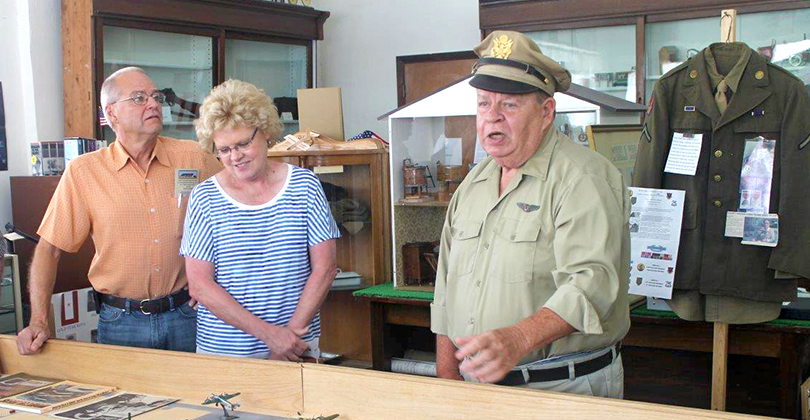Fairmont History Noted

By Dianne Girmus
The Nebraska Signal
According to the “Fillmore County Story,” many Civil War Vets came to Fairmont Township in 1870, desiring to homestead. The name Fairmont means “fine surroundings and a somewhat elevated position.” But, watered only by Indian Creek, the fine surroundings were almost barren of trees, a fact which created an extra-curricular activity for the settlers. In their spare time, between getting their homes and land ready, they each planted 100 trees to prevent soil erosion. Early settler A. L. Brown said the township land was not for everyone. “Lack of a reliable water supply and of timber for fuel and homes, demanded that only settlers with deep faith and a strong back could settle there, but Mr. and Mrs. Jonathan Horton opened a prayer house, their sod home, on Sundays for church, which provided them needed comfort.”
Lumber and provisions were hauled by horse and wagon from Lincoln and Nebraska City until 1871 when the Burlington Railroad line was extended to Fairmont. Along with the railroad came a hearty group of settlers who felt it would be a great opportunity to live in a railroad town. They worked hard to make things happen quickly with J. E. Porter’s General Store ready for business that first year with Dan Spade’s General Merchandise Store right behind it. By the fall of 1872, the very industrial area was working on a school building, hotels, lumber yards, and coal and feed yards. Three brick yards were established to supply materials. All the hard work paid off and by the spring of 1873 Fairmont was incorporated as a village which continued to prosper until a year later when the siege of grasshoppers attacked, devouring 40-60 acres of corn in a few hours, garden vegetables in a few minutes and even shaving off fork, shovel and hoe handles. The economy then suffered a two-year dull period as a result.
The devastating “Blizzard of 1888” actually had an uplifting event at Fairmont—probably the only one in history. A young boy and his dog disappeared and were feared dead. The next morning the search party saw a tiny spot of steam rising from one of the huge drifts. The dog’s warm breath had kept a passage in the drift open, sufficient to provide air and his body heat kept them both from freezing—a true “Miracle on the Plains!” Fairmont’s population continued to rise and by 1888 totaled 1,800. Business firms and industries created many new jobs and the village became known as the “Metropolis” of the area.


